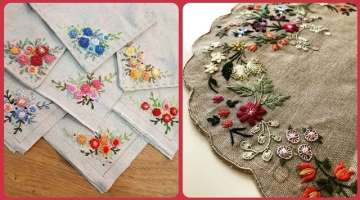Lioness Momma Adopts Sick Baby Leopard And Raises As Her Own
Lions and leopards at the Gir National Park don’t usually get on. “They compete with each other” for space and food, said Stotra Chakrabarti, a researcher who studies animal behaviour. “They are at perpetual odds.” And until recently, this statement wouldn’t have been questioned. But one particular lion, against all odds, broke the barrier when she adopted a baby leopard.
- 1 | 6

The unusual bond formed between the animals at Gir National Park, in Gujarat, India, where the wild creatures crossed paths just over a year ago. The bond was particularly notable as lions and leopards at the park are typically considered to be at 'perpetual odds' with each other, according to Stotra Chakrabarti, a postdoctoral researcher at the University of Minnesota who studies animal behaviour.
- 2 | 6

Speaking to The New York Times, Chakrabarti explained the animals 'compete' for space and food. However, the young lioness decided to put the differences aside and take pity on the two-month-old leopard cub. To be fair, I think it would have been difficult to resist the baby's big blue eyes and fluffy coat. Details of the interesting case were shared last week in the ecology journal Ecosphere, where authors Dheeraj Mittal, Stotra Chakrabarti, Shailesh B. Khambda and Joseph K. Bump described how the lioness spent weeks nursing, feeding and caring for her adoptive son.
- 3 | 6

The female had two cubs of her own, but she treated the leopard as if he were a member of the family. Examples of cross-species adoption in the wild are rare, and this particular case is the only documented example involving animals that are normally strong competitors. Other examples of interspecies adoption include a group of capuchin monkeys who took in an infant marmoset in 2004, and a family of bottlenose dolphins who fostered a baby melon-headed whale in 2014. The authors first spotted the unlikely pair in late December 2018, when they were seen hanging out near a freshly killed nilgai antelope. The team initially thought the relationship would be brief, and they were surprised when it continued.
- 4 | 6

The lioness' two cubs were fond of their small new sibling and were seen playing with the spotty cub and occasionally following him up trees. Speaking of the heartwarming scenes, Chakrabarti said: It looked like two big cubs and one tiny runt of the litter. The postdoctoral researcher, who has been studying the park's lions for nearly seven years, said the adoption was 'was surely the most 'wow' moment' he'd witnessed.
- 5 | 6

Chakrabarti suspects the leopard may have been less welcome if there were more adult lions around, but Asiatic lionesses often separate from the rest of the pride for a few months to raise their offspring, meaning the unlikely pair could bond undisturbed. Sadly, their relationship was cut short when the research team found the leopard cub's body near a watering hole, about 45 days after the lioness took him in. A field necropsy revealed he had most likely died because of a femoral hernia he had since birth. Chakrabarti commented on the disappointing turn of events, saying: It would have been fantastic to see, when the leopard cub grew up, how things would be. But it didn't happen.
- 6 | 6

The researcher believes the lioness may have overlooked the fact her new child was actually a leopard because of similarities the cubs share with young lions. Until they reach young adulthood, lions and leopards play, meow and beg for milk in similar ways, meaning the leopard cub was able to 'blend in' with his adoptive siblings.



















